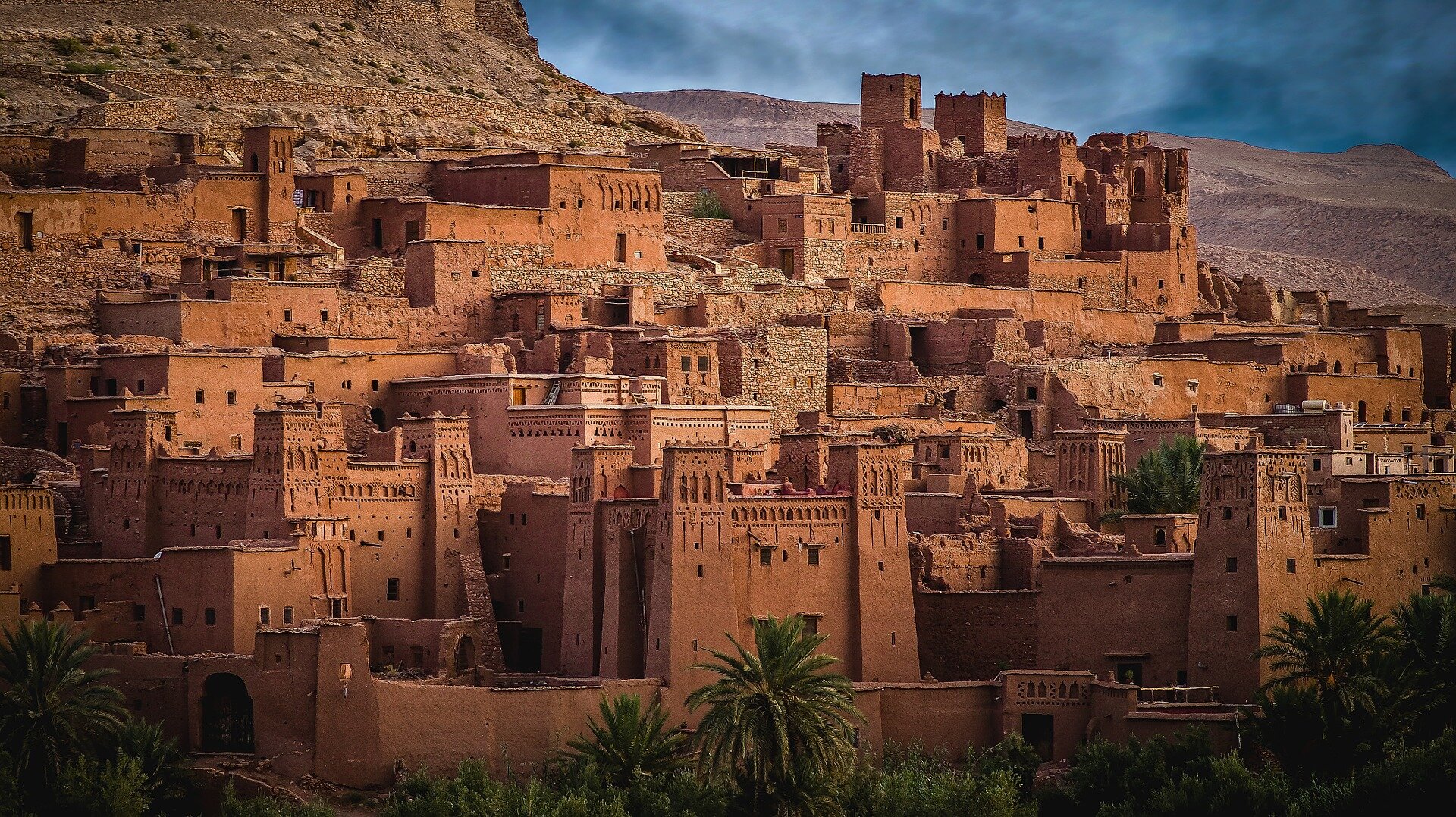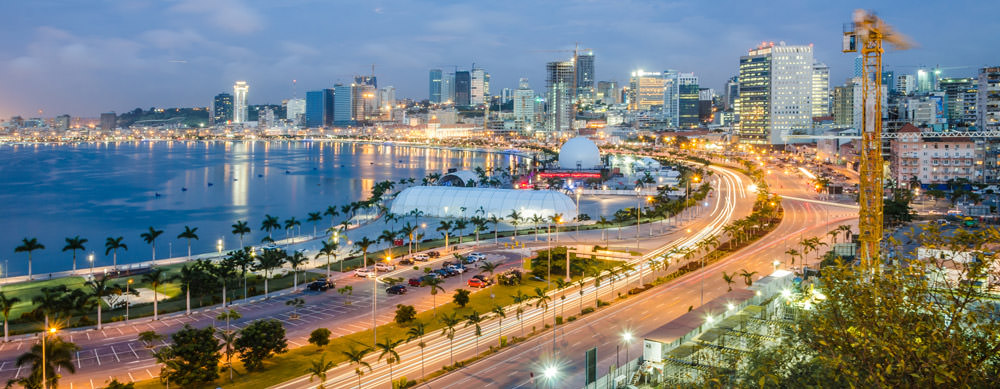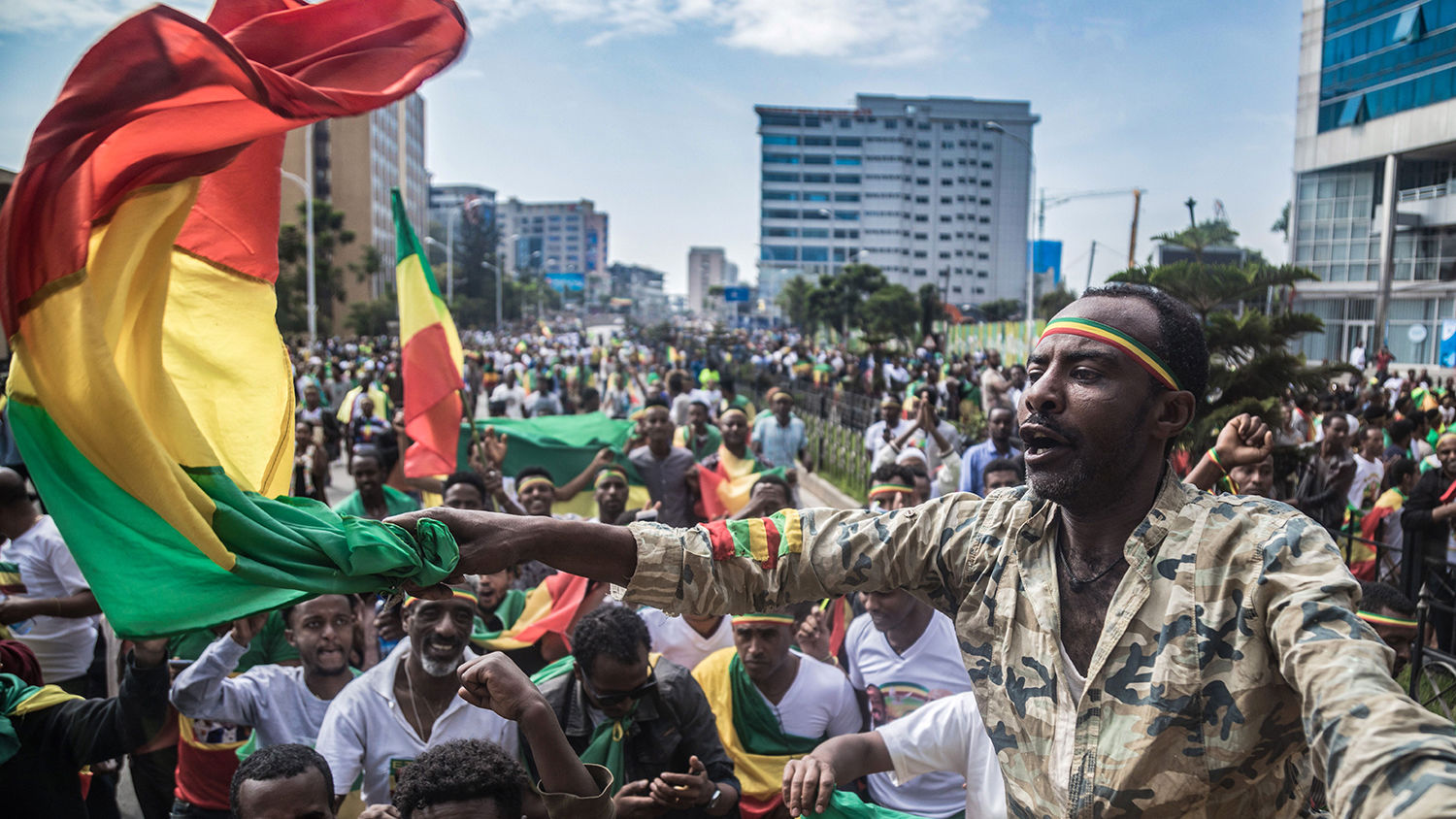Hello ladies and gents this is the Viking telling you that today we are talking about
TOP 10 RICHEST AFRICAN COUNTRIES IN 2020 RANKED BY GDP & PRIMARY EXPORTS
Here we discuss the 10 wealthiest countries in Africa 2020 and the nature of their economies.
All figures are based on the latest annual report by the International Monetary Fund (IMF) and the World Bank using GDP current prices in U. S. dollars.
1 | NIGERIA – THE RICHEST COUNTRY IN AFRICA (GDP: $446.543 Billion)

- GDP: $446.543 Billion (nominal, 2019 est.)
- Global Ranking: 27th
- Population: 195,874,740
- GDP per capita: $2,222 (nominal, 2019 est.)
- Country group: developing lower-middle income economy
- Value of exports: $46.68 billion (2017)
- Current account balance: $10.38 billion
- Currency: Nigerian Naira (NGN, ₦)
This West African country, with a population of over 200 million citizens, makes up an essential part of the African economy. With a GDP just under $450 billion, Nigeria holds the position of the richest country in Africa.
The sizeable GDP is mainly driven by finance, transport, infrastructure, tourism, and an abundance of crude oil.
The country records around 1.6 million barrels of crude oil a day, according to OPEC, making it the largest exporter of crude oil in Africa. These petroleum exports make up 10% of the total GDP and over 80% of the export sector revenue.
In addition to petroleum, Nigeria has an abundance of raw materials and natural resources, contributing to the region’s wealth. These include coal, limestone, zinc, lead, tin, natural gas, niobium, and iron ore. There is also sufficient fertile land for agriculture, which is responsible for over 20% of the GDP, producing cocoa and rubber. The large population have helped to propel Nigeria as the largest consumer retailer in Africa and the digitally aware residents have contributed to the country’s fast growing tech sector.
According to the World Bank, Nigeria’s GDP grew 7% year-on-year between 2000 and 2014, one of the fastest rates in Africa. This has slowed to 2% in recent years due to political instability, socioeconomic factors, and oil and production shocks. The country has placed a strong emphasis on protecting it natural resources, trying to move away from its large reliance on oil refineries and processing plants.
Known for its vibrant cultural heritage, different ethnicities, natural splendour, and large population, Nigeria remains the number one producer in terms of GDP output on the continent and Africa’s wealthiest country.
PRIMARY EXPORTS OF NIGERIA
Petroleum (crude, refined, and gas),Cocoa beans,Rough woods,Chemicals,Vehicles and aircraft parts
2 | SOUTH AFRICA (GDP: $358.839 Billion)

- GDP: $358.839 Billion (nominal, 2019 est.)
- Global Ranking: 35th
- Population: 58,775,022
- GDP per capita: $6,100 (nominal, 2019 est.)
- Country group: developing upper-middle income economy
- Value of exports: $108 billion (2017)
- Current account balance: −$8.584 billion (2017 est.)
- Currency: South African Rand
This southernmost country in Africa is another significant player on the continent as the second richest African country. With a highly developed economy, advanced infrastructure, and a GDP of over $350 billion, the country is considered one of the fastest-developing countries in the world.
Often referred to as the rainbow nation, South Africa is one of the only countries on this list that is not reliant on a single source of revenue. The country has a good mix of mining, manufacturing, financial services, and tourism. It is also abundant in natural resources and raw material exports the likes of gold, diamonds, platinum, coal, and iron ore. It is one of the world’s largest exporters of these commodities, particularly gold and platinum. The country is world renowned as a major tourist destination and places a lot of emphasis on tourism as a part of its economy.
However, political and global turmoil have hindered its ability to meet its full potential. The country was faced with a recession after experiencing consecutive quarters of negative GDP growth rates and development has slowed, growing its GDP by only 0.2% in 2019. South Africa also has the highest rates of inequality in the world.
PRIMARY EXPORTS FROM SOUTH AFRICA
gold, diamonds, platinum, coal, iron ore, other metals and minerals, machinery and equipment, motor cars, agricultural foodstuff, wine
3 | EGYPT (GDP: $302.256 Billion)

- GDP: $302.256 Billion (nominal, 2019 est.)
- Global Ranking: 40th
- Population: 100,000,000
- GDP per capita: $3,046 (nominal, 2019 est.)
- Country group: developing lower-middle income economy
- Value of exports: $23.3 billion (2017 est.)
- Current account balance: −$14.92 billion (2017 est.)
- Currency: Egyptian Pound (EGP, E£)
This ancient land in Northern Africa held the spot of the richest country in Africa for many years. However, the economy suffered severely and foreign exchange reserves tumbled following the 2011 revolution during the Arab uprising. With the most recent GDP of over $300 billion, Egypt now holds the third spot on this rich list.
Economic activities have improved and stabilised over the last decade to experience positive economic growth. The government recently concluded an economic reform program alongside the IMF aimed at reforming and bolstering the economy. Real GDP growth reached 5,6% in 2019, up from 5,3% in 2018. The country has also seen unemployment levels fall, an improvement in foreign exchange reserves, higher export of goods and services, and a bolstered tourism sector all contributing to its development.
The leading factors of the Egyptian economy include petroleum and natural gas exports, tourism, wholesale and retail trade, construction, and real estate. The state has diversified its economy away from just raw material exports in recent years and over half of the GDP now comes from service based employment.
However, Egypt could face some socio-economic issues due to a large percent of people living below the poverty line, unemployment, a weak healthcare system, and a global slowdown.
PRIMARY EXPORTS FROM EGYPT
crude oil and petroleum products, cotton, textiles and agricultural goods, metal products, chemicals
4 | ALGERIA (GDP: $172.781 Billion)

- GDP: $172.781 Billion (nominal, 2019 est.)
- Global Ranking: 53rd
- Population: 42,972,878
- GDP per capita: $3,980 (nominal, 2019 est.)
- Country group: developing upper-middle income economy
- Value of exports: $34.37 billion (2017 est.)
- Current account balance: −$22.1 billion
- Currency: Algerian dinar (DZD, دج)
The largest country on the continent found in the north, Algeria comes in at fourth place on this list of wealthiest countries in Africa. Boasting a significant economy and available infrastructure and a GDP of over $170 Billion, the county achieved a notable achievement of reducing poverty by 20% within the last 20 years.
Crude oil reserves are abundant in this developing Saharan country and the economy is heavily reliant on it. So much so that hydrocarbons (oil and natural gas) make up almost 70% of the income of the country. A recent discovery of more crude oil reserves have boosted this rapidly growing industrial country. Other sectors that make up the Algerian economy include agriculture, industrial works, commercial services, and construction. The country is also one of the largest suppliers of Ammonia in Africa.
However, it is worth noting that the recent depression and instability in oil prices has resulted in a decline in the country’s currency reserves. In addition, political uncertainty and scandals in the hydrocarbon industry have caused a dip in Algeria’s economic growth.
PRIMARY EXPORTS FROM ALGERIA
petroleum, natural gas and petroleum products, ammonia
5 | MOROCCO (GDP: $119,04 Billion)

- GDP: $119,04 Billion (nominal, 2019 est.)
- Global Ranking: 58th
- Population: 36,029,138
- GDP per capita: $3,345 (nominal, 2019 est.)
- Country group: developing lower-middle income economy
- Value of exports: $24,5 billion (2017)
- Current account balance: −$3.92 billion (2017 est.)
- Currency: Moroccan dirham (MAD)
With a GDP of almost $120 Billion, Morocco comes in at number 5 on this list of richest countries in Africa. The economy of this country in North Africa is versatile and stable, experiencing growth in a number of industries over the last decade. It is the second-richest non-oil-producing African country.
The country’s economy is driven by mining and manufacturing. 30% of Morocco’s GDP comes from industry, 15% from agriculture, and 55% from services. This is supplemented by a growing tourism sector with locals being welcoming of tourists and the government placing a strong emphasis on attracting visitors to the country that is well known for its attractions.
Morocco relies heavily on its agriculture and is the third largest producer of phosphorus in the world. The country has benefited greatly from its diversified exports, not limited to electrical equipment, vehicles, and vehicle parts. Additionally the telecom and textile industries bring a lot to the economy.
However, Morocco has experienced stunted economic growth owing to internal problems, with real GDP growth of only 2.7% in 2019, missing the World Banks’ estimate of 2.9%.
PRIMARY EXPORTS FROM MOROCCO
clothing and textiles, automobiles, aircraft parts, electric components,inorganic chemicals, crude minerals, fertilizers, petroleum products,citrus fruits, vegetables, fish
6 | KENYA (GDP: $99,246 Billion)

- GDP: $99.246 billion (nominal, 2019 est.)
- Global Ranking: 61st
- Population: 47,564,296
- GDP per capita: $2,010 (nominal, 2019 est.)
- Country group: developing lower-middle income economy
- Value of exports: $5.792 billion (2017 est.)
- Current account balance: −$5.021 billion
- Currency: Kenyan shilling (KES, KSh)
Kenya, a country in East Africa well known for its vast landscapes and wildlife is next on Africa’s richest country list, having a GDP of almost $100 Billion. This nation with its stable living conditions, an established coffee and tea sector, and rapidly growing agricultural sector is the wealthiest in southeast and central Africa.
Historically, its coastline has been home to a number of strategic ports for Asian and Arabian traders for centuries, becoming a trade hub for the region. The Kenyan economy is not built around the oil sector like so many other countries on this list, but still experiences diverse positive growth.
The Kenyan nation has emerged as one of the fastest growing economies in Sub-Saharan Africa, growing GDP by 5.7% in 2019. This as a result of positive investor confidence, a stable political climate and service sector, a good macroeconomic environment, and a clear business agenda.
The industrial sector contributes almost 50% of the GDP. The agricultural sector contributes to 35% of the GDP with the main products being coffee, tea, and maize. Fast growth was also experienced in the tourism, financial services and technology industries, while petroleum comprises a significant part of its foreign exchange.
PRIMARY EXPORTS FROM KENYA
tea, coffee, horticultural products, petroleum products, fish, cement, apparel
7 | ANGOLA (GDP: $91,527 Billion)

- GDP: $91,527 Billion (nominal, 2019 est.)
- Global Ranking: 62nd
- Population: 30,809,762
- GDP per capita: $3,038 (nominal, 2019 est.)
- Country group: developing lower-middle income economy
- Value of exports: $33.07 billion (2017 est.)
- Current account balance: −$1.254 billion
- Currency: Angolan kwanza (AOA, Kz)
The country of Angola has one of the biggest reserves of raw materials in Africa. Essentially, it could be higher up on this list of Africa’s richest nations. However, due to resource mismanagement and internal corruption, the economy of the country has been negatively affected. With a GDP of over $90 Billion, it comes in at number 7 on this list.
Angola’s economy is built on oil, with large reserves of natural gas and oil, making up over one-third of its GDP. The production and export of crude oil contributes significantly to foreign exchange. In fact, 90% of the nation’s revenue in the export sector comes from the sale of crude oil. Other noteworthy exports include diamonds and cargo ships. Agriculture is also expected to become an important sector for the economy going forward.
The civil war in Angola ended in 2002. Since then positive steps have been taken, striving towards economic advancement and stability. There has been work on both political and structural reforms alongside the IMF and the World Bank. Since then, the country has experienced one of the fastest growing economies in the world and become one of the richest African countries.
PRIMARY EXPORTS FROM ANGOLA
crude oil, refined petroleum products, diamonds, coffee, sisal, fish and fish products, timber, cotton
8 | ETHIOPIA (GDP: $91,166 Billion)
- GDP: $91,166 Billion (nominal, 2019 est.)
- Global Ranking: 63rd
- Population: 108,113,150
- GDP per capita: $953 (nominal, 2019 est.)
- Country group: developing low income economy
- Value of exports: $3.23 billion (2017 est.)
- Current account balance: −$6.551 billion
- Currency: Birr (ETB, ብር)

Found in the horn of Africa, the landlocked country of Ethiopia split by the Great Rift Valley is the eight richest country in Africa. With archaeological finds dating back over 3 million years, this ancient land is famous for being the place where the coffee bean first originated. The nation is the highest coffee and honey producer in Africa, making up a large portion of the country’s foreign exchange. Other exports include legumes, oily seeds, and cut flowers.
The GDP of $91,166 billion comprises agriculture, construction, manufacturing, tourism, food processing, resources and energy. Agriculture is the region’s most promising resource, making up over 40% of the GDP, 60% of exports, and more than 80% of total employment.
Ethiopia’s economic growth has averaged 9.9% year-on-year for 10 years since 2008. This stable annual growth, something that very few African have managed, has begun to attract foreign investment. In 2018, the government launched an ambitious economic reform to open up the economy even further and spearhead transformation. The country’s poverty level fell to 31% by 2015 and it intends to be a middle-income economy by 2025.
However, high consumer inflation, socio-political instability, and an underdeveloped private sector are issues to keep an eye on.
PRIMARY EXPORTS FROM ETHIOPIA
coffee, qat, oilseeds, gold, leather products, live animals
9 | GHANA (GDP: $67,077 Billion)

- GDP: $67,077 Billion
- Global Ranking: 71st
- Population: 29,767,108
- GDP per capita: $2,223 (nominal, 2019 est.)
- Country group: developing lower-middle income economy
- Value of exports: $13.84 billion
- Current account balance: −$2.131 billion
- Currency: Cedi (GHS, GH₵)
Ghana, found in West Africa, has an economy that is both diverse and rich in resources. With a GDP of $67,077 Billion, it just makes this list of wealthiest countries on the African continent coming it at number nine. The country was the first in sub-Saharan Africa to break free from colonial rule as well as the first to achieve the target of halving extreme poverty.
The nation has attracted foreign investment due to its overall positive business environment, experienced economic growth of just over 6% in the last two years. Services contributes to around 50% of the Ghanaian GDP and employ almost 30% of the work force. Industry is the next biggest contributor to GDP at just under 25%, followed by agriculture.
Ghana has an abundance of natural resources, helping to feel an economic boom. Gold is the country’s main export. This is followed by petroleum and together they make up 50% of the country’s foreign exchange. Other major exports include cocoa beans, timber, and gold.
PRIMARY EXPORTS FROM GHANA
gold, bauxite, aluminum, manganese ore, diamonds, oil, cocoa, timber, tuna, horticultural products
10 | TANZANIA (GDP: $62,224 Billion)
- GDP: 62,224 Billion (nominal, 2019 est.)
- Global Ranking: 74th
- Population: 58,552,845
- GDP per capita: $1,105 (nominal, 2019 est.)
- Country group: developing lower-middle income economy
- Value of exports: $5.6685 billion
- Current account balance: –$4.002 billion
- Currency: Tanzanian shilling (TZS, TSh)
Rounding up this list of the top 10 richest African countries is Tanzania, with a GDP of $62,224 billion over the last year. Known as the home of some of the continent’s most famous national parks and of course Kilimanjaro, the country comprises a lower-middle mixed income economy.
The country’s economy is largely based on agriculture, contributing almost 25% to GDP, and employing half of the workforce. Industries are a growing component of the economy, which accounts for almost 30% of GDP and includes mining, manufacturing, construction, electricity, natural gas, and water supply. The main exports include gold, coffee, cashew nuts, and cotton.
Tanzania has achieved a relatively high economic growth in recent years, with a 5,6% growth rate, bust this does seems to be slowing down. The medium-term outlook is positive, which is supported by large infrastructure spending. However, despite economic growth and the poverty rate having decreased in the past few years, the absolute number of people living in poverty has remained the same.
PRIMARY EXPORTS FROM TANZANIA
gold, cashew nuts, coffee and cotton.

Comments
Post a Comment